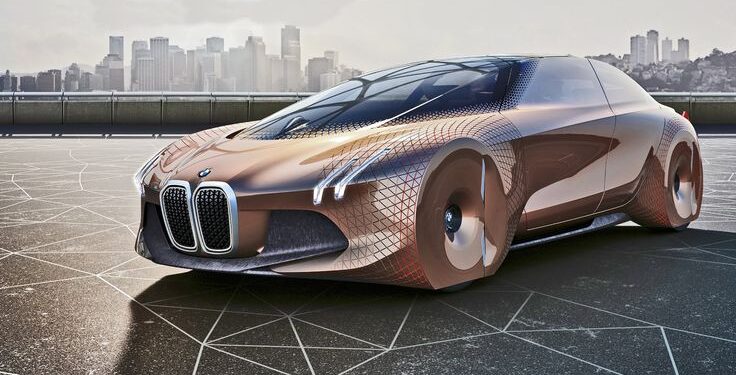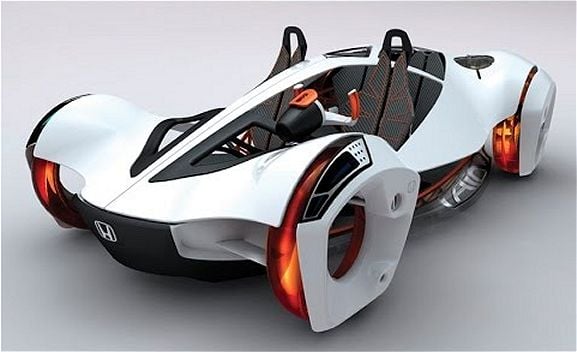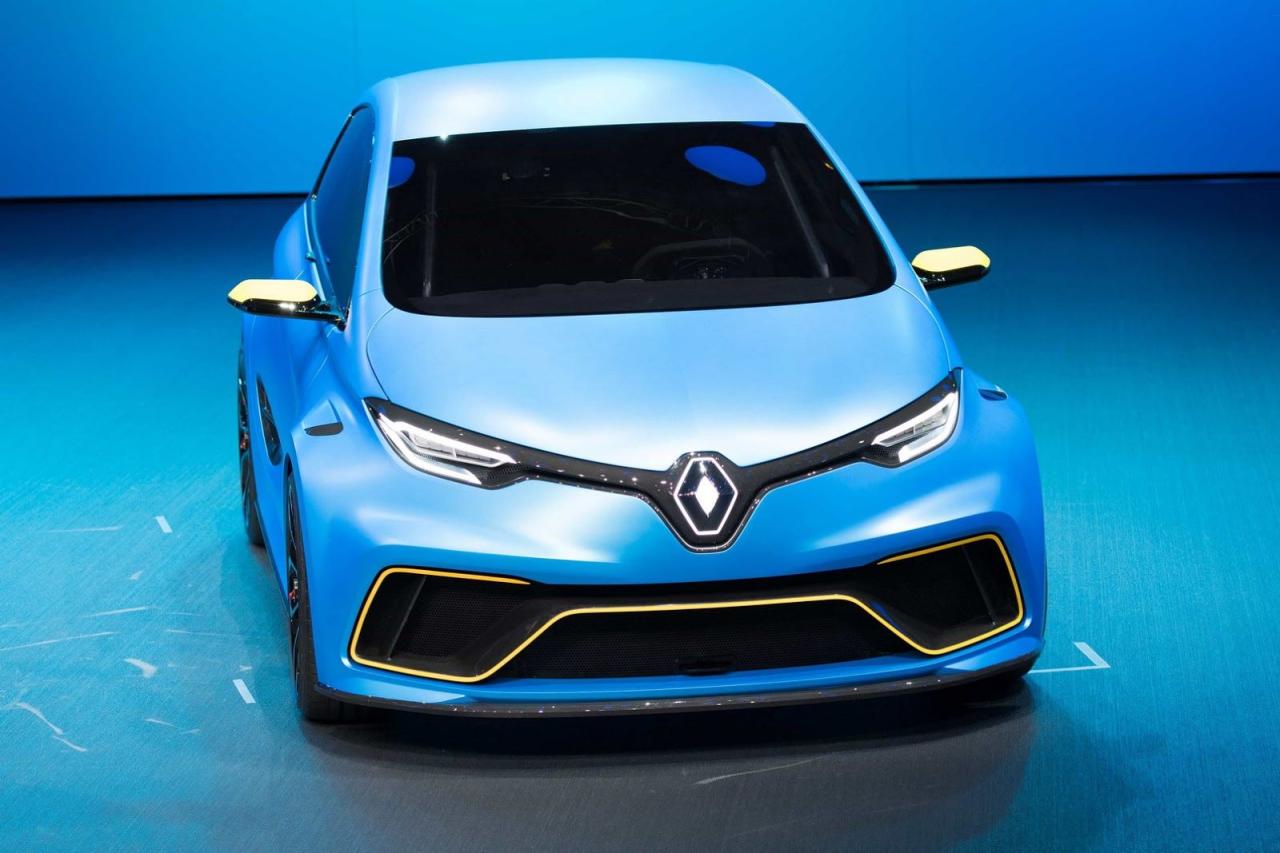In the midst of rapid urbanization and environmental concerns, next-generation cars are emerging as a powerful solution to transform urban mobility. As cities grapple with congestion, pollution, and the need for efficient transportation systems, innovative automotive technologies offer promising avenues for a greener, smarter, and more sustainable future. This article delves into how next-gen vehicles—powered by electric drivetrains, autonomous features, and cutting-edge connectivity—are reshaping urban landscapes, enhancing mobility, and reducing the environmental footprint of our cities.
By integrating advanced technology and eco-friendly practices, next-generation cars are not just a luxury; they are essential tools in the drive toward sustainable urban mobility. In the following sections, we explore the evolution of automotive technology, the key innovations driving the industry, and the far-reaching impacts on urban transportation. We also examine challenges, government policies, and future trends that will dictate the pace of this transformation.
The Evolution of Automotive Technology
The automotive industry has undergone significant changes over the past century. From the early combustion engine to modern electric vehicles (EVs), each technological leap has redefined transportation and urban living. The advent of next-generation cars marks a pivotal moment in this evolution, combining sustainability with high performance.
Historically, vehicles were primarily designed for speed and power, with little regard for environmental impact. Over time, concerns about air quality, fossil fuel dependency, and climate change have spurred a shift toward cleaner and more efficient technologies. Today’s next-gen cars are the culmination of decades of research and development, blending innovative engineering with sustainable practices.
A. Key Milestones in Automotive Innovation
The transformation of the automotive industry can be traced through several key milestones:
A. Invention of the Combustion Engine:
- Pioneered mass production and the modern automobile.
- Revolutionized personal and commercial transportation.
B. Rise of Electric Vehicles:
- Early experiments in electric propulsion paved the way for modern EVs.
- Increasing environmental awareness accelerated the shift to electric power.
C. Development of Hybrid Technologies:
- Bridged the gap between combustion engines and fully electric systems.
- Provided a transitional solution for reducing emissions.
D. Advent of Autonomous Driving:
- Introduced sophisticated sensors and machine learning algorithms.
- Laid the groundwork for self-driving capabilities.
E. Integration of Connectivity and Smart Features:
- Enabled vehicles to communicate with each other and urban infrastructure.
- Improved navigation, safety, and overall driving experience.
These milestones highlight the progress from traditional vehicles to the technologically advanced, environmentally friendly cars of today.
Technological Innovations in Next-Gen Cars
Next-generation cars are defined by their incorporation of revolutionary technologies that enhance performance, safety, and sustainability. By leveraging the power of digital transformation, these vehicles offer a host of benefits that extend beyond conventional transportation.
A. Electric Powertrains
Electric powertrains are at the core of next-gen vehicles. Unlike traditional internal combustion engines, electric powertrains use batteries to store energy, which is then converted to power the motor. This shift has several advantages:
A. Reduced Emissions:
- Zero tailpipe emissions help improve urban air quality.
- Contributes to global efforts to combat climate change.
B. Improved Energy Efficiency:
- Electric motors are more efficient than combustion engines.
- Lower energy consumption translates to cost savings.
C. Quiet Operation:
- Reduced noise pollution in urban areas.
- Enhances the overall driving experience.
D. Lower Maintenance Requirements:
- Fewer moving parts result in reduced wear and tear.
- Simplifies long-term ownership and upkeep.
B. Autonomous Driving Technologies
Autonomous driving is revolutionizing urban transportation by reducing human error and optimizing traffic flow. Advanced sensors, cameras, and machine learning algorithms enable vehicles to navigate complex environments with minimal human intervention.
A. Enhanced Safety:
- Minimizes accidents caused by driver fatigue or distraction.
- Incorporates real-time data to avoid potential hazards.
B. Traffic Optimization:
- Vehicles can communicate with each other to streamline traffic flow.
- Reduces congestion in densely populated urban areas.
C. Improved Accessibility:
- Opens up mobility options for the elderly and disabled.
- Creates new opportunities for shared transportation services.
D. Cost Reduction:
- Lowers the need for extensive human-operated logistics systems.
- Promotes efficiency in public transportation and ride-sharing services.
C. Connectivity and Smart Features
Connectivity is another cornerstone of next-gen cars. With the integration of advanced communication systems, vehicles can now interact with urban infrastructure, other vehicles, and even pedestrians. This connected ecosystem enhances safety, navigation, and overall efficiency.
A. Real-Time Traffic Management:
- Vehicles receive live updates on road conditions and traffic patterns.
- Helps drivers avoid congested areas and optimize routes.
B. Enhanced Navigation:
- Integration with GPS and mapping technologies provides accurate directions.
- Incorporates weather, construction, and accident data for safer travel.
C. Predictive Maintenance:
- Sensors monitor vehicle performance and alert owners to potential issues.
- Minimizes downtime and extends the lifespan of the vehicle.
D. Integration with Smart Cities:
- Facilitates communication between vehicles and urban infrastructure.
- Supports intelligent traffic lights, parking systems, and public transportation networks.
D. Sustainable Materials and Manufacturing
Beyond operational efficiency, next-gen cars are also transforming the production process. Sustainable materials and eco-friendly manufacturing practices are becoming integral to the automotive industry.
A. Recyclable Materials:
- Use of recyclable components reduces waste and environmental impact.
- Supports a circular economy within the manufacturing sector.
B. Energy-Efficient Production:
- Adoption of renewable energy sources in factories.
- Reduces the carbon footprint of vehicle production.
C. Lightweight Materials:
- Use of advanced composites and alloys improves fuel efficiency.
- Contributes to overall vehicle performance and energy conservation.
D. Reduced Emission Manufacturing:
- Implementation of cleaner production processes.
- Aligns with global sustainability goals and environmental standards.
Sustainable Urban Mobility: Transforming Cityscapes
Urban mobility is undergoing a paradigm shift, driven by the need for greener, more efficient transportation systems. Next-gen cars are at the heart of this revolution, offering solutions that address the multifaceted challenges of urban living.
A. The Urban Mobility Challenge
Cities around the world are facing significant transportation challenges, including congestion, air pollution, and inefficient public transit systems. The rapid growth of urban populations has put immense pressure on existing infrastructure, making it essential to rethink how people move within cities.
A. Traffic Congestion:
- Increased vehicle density leads to longer commute times and reduced productivity.
- Strains on road networks result in frequent bottlenecks.
B. Environmental Pollution:
- Emissions from traditional vehicles contribute to poor air quality.
- Urban areas experience heightened levels of smog and respiratory issues.
C. Limited Parking and Infrastructure:
- Scarcity of parking spaces in densely populated areas.
- Inadequate public transit systems fail to meet the demand.
D. Economic Implications:
- Traffic delays lead to economic losses due to reduced efficiency.
- Increased healthcare costs from pollution-related illnesses.
B. Next-Gen Cars as a Solution
Next-gen cars, with their advanced features and sustainable design, offer a viable solution to these urban challenges. By integrating electric powertrains, autonomous systems, and smart connectivity, these vehicles can significantly improve the urban transportation landscape.
A. Reduced Emissions and Pollution:
- Electric vehicles produce zero tailpipe emissions, leading to cleaner air.
- Adoption of green manufacturing practices further reduces environmental impact.
B. Optimized Traffic Flow:
- Autonomous vehicles can communicate with traffic management systems to streamline flow.
- Intelligent navigation reduces congestion and shortens commute times.
C. Efficient Use of Space:
- Next-gen cars often incorporate innovative designs that require less parking space.
- Shared mobility services reduce the overall number of vehicles on the road.
D. Economic Benefits:
- Improved urban mobility enhances productivity and reduces operational costs.
- Lower fuel and maintenance expenses benefit both individuals and businesses.
Government Initiatives and Policy Impact
Government policies play a critical role in accelerating the adoption of next-gen cars and promoting sustainable urban mobility. Public initiatives and regulatory frameworks are essential for creating an environment where innovative transportation solutions can thrive.
A. Incentives for Green Vehicles
Many governments around the world are implementing incentive programs to encourage the purchase and use of electric and hybrid vehicles. These incentives often include tax credits, rebates, and reduced registration fees, making next-gen cars more affordable for consumers.
A. Tax Incentives:
- Substantial tax reductions for buyers of eco-friendly vehicles.
- Encourages the shift from traditional combustion engines to electric powertrains.
B. Rebates and Subsidies:
- Financial support for vehicle purchases and charging infrastructure.
- Reduces the upfront cost of adopting next-gen vehicles.
C. Reduced Registration Fees:
- Lower fees for electric and hybrid vehicles to promote environmental benefits.
- Encourages a larger market share for sustainable transportation.
D. Incentives for Manufacturers:
- Grants and subsidies for companies investing in green technology.
- Stimulates innovation and drives down production costs over time.
B. Urban Planning and Infrastructure
To fully harness the potential of next-gen cars, cities must invest in modern infrastructure and smart urban planning. This involves integrating transportation networks with technology-driven solutions that enhance mobility and safety.
A. Smart Traffic Management Systems:
- Implementation of real-time traffic monitoring and adaptive signal controls.
- Improves flow and reduces congestion across urban corridors.
B. Expansion of Charging Networks:
- Development of widespread electric vehicle charging stations.
- Ensures convenient access to power, encouraging EV adoption.
C. Public-Private Partnerships:
- Collaboration between government agencies and private companies to upgrade urban transit.
- Leverages expertise and resources for efficient infrastructure development.
D. Integration with Public Transit:
- Seamless connectivity between next-gen cars and traditional public transportation systems.
- Supports multimodal transit options that cater to diverse commuter needs.
C. Regulatory Frameworks
In addition to incentives and infrastructure development, governments are establishing regulations that ensure safety, performance, and environmental standards for next-gen cars.
A. Emissions Standards:
- Stricter limits on greenhouse gas emissions from vehicles.
- Promotes cleaner energy alternatives and reduces urban pollution.
B. Safety Regulations:
- Mandatory safety features for autonomous and connected vehicles.
- Ensures that technological advancements do not compromise driver and pedestrian safety.
C. Data Privacy Laws:
- Regulations governing the collection and use of data from connected vehicles.
- Protects user information and builds trust in digital mobility solutions.
D. Innovation-Friendly Policies:
- Frameworks that support research, development, and testing of new automotive technologies.
- Encourages continuous improvement and technological breakthroughs.
Environmental and Economic Benefits
The widespread adoption of next-gen cars brings significant environmental and economic advantages that extend far beyond individual users. These benefits are crucial for achieving long-term urban sustainability and resilience.
A. Environmental Advantages
The primary environmental benefit of next-generation cars is the reduction in greenhouse gas emissions. Electric and hybrid vehicles drastically lower the amount of carbon dioxide released into the atmosphere compared to traditional vehicles. Other key environmental advantages include:
A. Improved Air Quality:
- Reduction in harmful pollutants leads to healthier urban environments.
- Lower incidence of respiratory and cardiovascular diseases among residents.
B. Noise Reduction:
- Quieter electric engines contribute to reduced noise pollution.
- Enhances quality of life in densely populated areas.
C. Energy Efficiency:
- Electric drivetrains offer higher efficiency, reducing overall energy consumption.
- Supports the transition to renewable energy sources.
D. Sustainable Resource Use:
- Emphasis on recyclable materials and sustainable manufacturing practices minimizes waste.
- Contributes to the circular economy and conservation of natural resources.
B. Economic Advantages
Next-gen cars are also catalysts for economic growth. They stimulate job creation in new technology sectors, reduce operating costs, and enhance overall urban productivity. Some of the key economic benefits are:
A. Lower Operating Costs:
- Reduced fuel and maintenance expenses benefit consumers and fleets alike.
- Frees up resources for investment in other urban infrastructure.
B. Job Creation:
- Growth in green technology sectors fosters new job opportunities.
- Supports local economies and drives innovation.
C. Enhanced Competitiveness:
- Cities with efficient mobility systems attract businesses and talent.
- Promotes economic diversification and sustainable urban growth.
D. Increased Property Values:
- Improved urban environments often lead to higher real estate values.
- Attracts investment and revitalizes neighborhoods.
Future Trends and Challenges
While next-generation cars offer a promising path forward, the journey toward fully sustainable urban mobility is not without challenges. Understanding these future trends and potential hurdles is essential for stakeholders in the automotive and urban planning sectors.
A. Emerging Trends
The landscape of urban mobility is continually evolving. Several trends are poised to shape the future of next-gen cars and sustainable transportation:
A. Integration of AI and Machine Learning:
- Advanced algorithms will further refine autonomous driving and predictive maintenance.
- Enhances safety and operational efficiency.
B. Expansion of Vehicle-to-Everything (V2X) Communication:
- Vehicles will increasingly interact with urban infrastructure, other vehicles, and even pedestrians.
- Promotes a seamlessly connected urban mobility ecosystem.
C. Development of Solid-State Batteries:
- Next-generation batteries promise longer ranges, faster charging times, and improved safety.
- Accelerates the adoption of electric vehicles.
D. Growth of Shared Mobility Services:
- Ride-sharing and carpooling platforms will become more integrated with public transit systems.
- Reduces the total number of vehicles on the road and eases congestion.
E. Focus on Renewable Energy Integration:
- Charging infrastructure will increasingly rely on renewable energy sources.
- Contributes to a fully sustainable transportation network.
B. Addressing Challenges
Despite the optimism surrounding next-gen cars, several challenges remain. Policymakers, manufacturers, and urban planners must work together to address these issues.
A. Infrastructure Development:
- Expansion of charging networks and smart road systems requires significant investment.
- Coordinated planning between public and private sectors is essential.
B. Technological Standardization:
- Interoperability between different systems and platforms remains a challenge.
- Industry standards and regulatory frameworks need continuous refinement.
C. Consumer Adoption:
- Educating consumers about the benefits and practicalities of next-gen cars is crucial.
- Overcoming resistance to change requires comprehensive outreach and incentives.
D. Cybersecurity and Data Privacy:
- Increased connectivity exposes vehicles to potential cyber threats.
- Robust security measures and clear regulations are necessary to protect user data.
E. Economic Disparities:
- Ensuring equitable access to new mobility technologies in all urban areas.
- Addressing affordability and accessibility remains a key focus.
The Role of Stakeholders in Shaping Urban Mobility
The successful integration of next-gen cars into urban ecosystems requires collaboration among various stakeholders, including governments, manufacturers, urban planners, and the public.
A. Collaboration Between Public and Private Sectors
A unified approach is essential for driving sustainable urban mobility forward. Public-private partnerships can harness the strengths of both sectors:
A. Policy Development:
- Governments create frameworks that encourage innovation and sustainable practices.
- Private companies invest in research and technological advancements.
B. Infrastructure Investment:
- Joint efforts in building charging stations, smart traffic systems, and urban transit networks.
- Enhances overall connectivity and efficiency.
C. Educational Initiatives:
- Programs to raise public awareness about the benefits of next-gen vehicles and sustainable mobility.
- Encourages community engagement and acceptance.
D. Research and Development:
- Collaborative projects that drive innovation in battery technology, autonomous systems, and connectivity solutions.
- Fosters an ecosystem of continuous improvement.
B. Community Engagement and Awareness
Educating the public is as important as technological innovation. Successful integration of next-gen cars depends on widespread community support and understanding.
A. Public Information Campaigns:
- Disseminate clear information on the environmental and economic benefits of next-gen cars.
- Utilize media, social platforms, and community events to educate citizens.
B. Pilot Programs:
- Implement trial projects in select urban areas to demonstrate the effectiveness of new mobility solutions.
- Gather data and feedback to refine systems.
C. Incentive Programs:
- Offer rebates, tax credits, and other incentives to encourage the adoption of eco-friendly vehicles.
- Promote long-term behavioral change.
D. Stakeholder Forums:
- Engage local businesses, residents, and civic organizations in planning sustainable urban mobility projects.
- Ensure diverse perspectives are considered in policy-making.
Conclusion
Next-generation cars are not merely an evolution in automotive design; they are a transformative force in shaping the future of urban mobility. By leveraging innovative technologies—ranging from electric powertrains and autonomous systems to smart connectivity and sustainable manufacturing—these vehicles are poised to address some of the most pressing challenges faced by modern cities.
The benefits of next-gen cars extend well beyond cleaner air and reduced emissions. They offer a pathway to enhanced urban efficiency, economic growth, and a higher quality of life for residents. As governments, manufacturers, and communities come together to invest in sustainable infrastructure and technology, the vision of smart, connected, and green urban mobility becomes increasingly attainable.
The journey toward a sustainable future is filled with both opportunities and challenges. Continued innovation, robust policy frameworks, and collaborative efforts among all stakeholders will be essential to realize the full potential of next-generation vehicles. With forward-thinking strategies and a commitment to environmental stewardship, the evolution of urban mobility promises to create cities that are not only more livable but also resilient in the face of future challenges.
Embracing the transition to next-gen cars means investing in a future where technology and sustainability go hand in hand. It is a transformative step that redefines how we move, work, and interact with our urban environments. In a world increasingly conscious of its environmental footprint, the shift toward sustainable urban mobility is not just beneficial—it is imperative.












